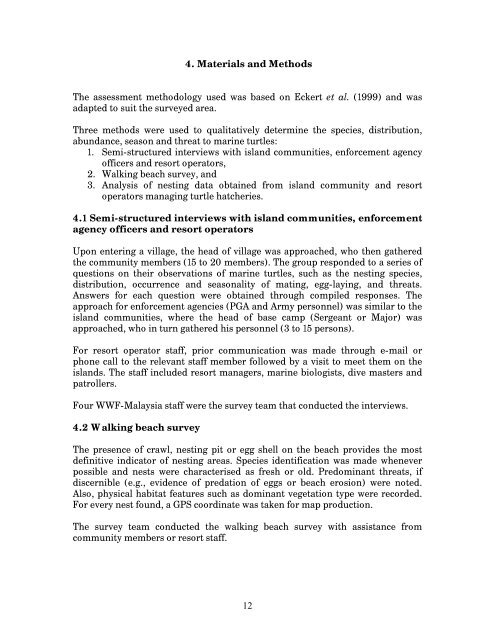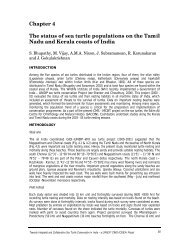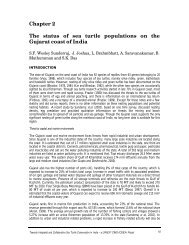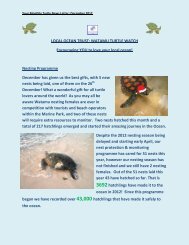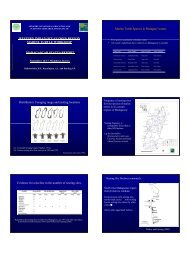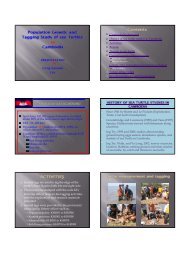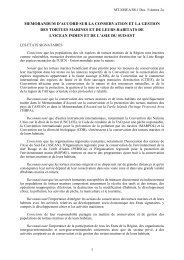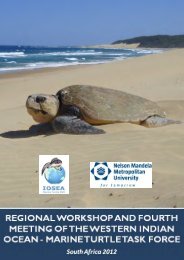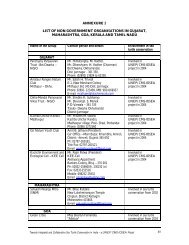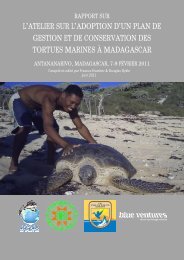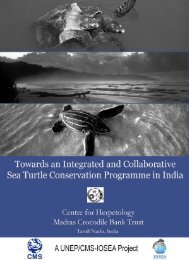Marine Turtle status Report - Indian Ocean - South-East Asian ...
Marine Turtle status Report - Indian Ocean - South-East Asian ...
Marine Turtle status Report - Indian Ocean - South-East Asian ...
Create successful ePaper yourself
Turn your PDF publications into a flip-book with our unique Google optimized e-Paper software.
4. Materials and MethodsThe assessment methodology used was based on Eckert et al. (1999) and wasadapted to suit the surveyed area.Three methods were used to qualitatively determine the species, distribution,abundance, season and threat to marine turtles:1. Semi-structured interviews with island communities, enforcement agencyofficers and resort operators,2. Walking beach survey, and3. Analysis of nesting data obtained from island community and resortoperators managing turtle hatcheries.4.1 Semi-structured interviews with island communities, enforcementagency officers and resort operatorsUpon entering a village, the head of village was approached, who then gatheredthe community members (15 to 20 members). The group responded to a series ofquestions on their observations of marine turtles, such as the nesting species,distribution, occurrence and seasonality of mating, egg-laying, and threats.Answers for each question were obtained through compiled responses. Theapproach for enforcement agencies (PGA and Army personnel) was similar to theisland communities, where the head of base camp (Sergeant or Major) wasapproached, who in turn gathered his personnel (3 to 15 persons).For resort operator staff, prior communication was made through e-mail orphone call to the relevant staff member followed by a visit to meet them on theislands. The staff included resort managers, marine biologists, dive masters andpatrollers.Four WWF-Malaysia staff were the survey team that conducted the interviews.4.2 Walking beach surveyThe presence of crawl, nesting pit or egg shell on the beach provides the mostdefinitive indicator of nesting areas. Species identification was made wheneverpossible and nests were characterised as fresh or old. Predominant threats, ifdiscernible (e.g., evidence of predation of eggs or beach erosion) were noted.Also, physical habitat features such as dominant vegetation type were recorded.For every nest found, a GPS coordinate was taken for map production.The survey team conducted the walking beach survey with assistance fromcommunity members or resort staff.12


